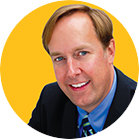Mrs. Earle was correct in that gardening is a constant exercise of the imagination, but it’s so much more. Doctors have long praised the benefits and health advantages of gardening which include:
- Being outside – exposure of Vitamin D
- Decreases dementia risk
- Mood-boosting benefits
- Helps combat loneliness
- Reduces stress
- Better sleep
My wife is an avid gardener. She has created a vegetable garden in one corner of our back yard, a flower bed in the other. Her favourites are the containers dotted around the house, from fragrant herbs and tomatoes to strawberries and flowers that bloom from spring to fall.
With all the physical and mental benefits, it is possible to find happiness in the dirt. But what can an individual do when their body faces challenges that prevent kneeling, stooping and squatting that’s necessary in traditional gardening?
Gardening with a Disability
Gardening has long been considered therapeutic. Spending time in a natural landscape can assist in relaxation, meditation, as well as providing peace and beauty. Those who love to garden are passionate and already have a strong connection to nature and shouldn’t lose this.
Horticultural therapy, which uses nature as therapy, dates back to 1812 and has been shown to help those who are physically disabled as well as those with mental health challenges. It can be an important part of recovery and care.
Enabled or Raised Gardens
An enabled or raised garden allows people with limited mobility to grow vegetables, herbs and flowers. The bed can be raised to a height that’s comfortable for the gardener.
A quick internet search for raised beds gives suggestions for the best types of wood if you want to construct it from scratch. For some, it may be just as easy to buy a kit. I’ve found kits that range from very affordable, to some that are high-end and positively decadent looking. There are some available for every budget at your local Home Depot, or online at Lee Valley or Wayfair.
What To Use In Your Garden
Rocks and stones can be used at the bottom to allow for drainage as excess moisture can damage the roots of delicate plants. I’ve discovered a “lasagna method” works well over top of the rocks—a mixture of leaves, grass clippings and other organic material such as wood chips with a layer of cardboard. This will break down into a nice compost over time.
 On top of this, add a mixture of topsoil, compost, and organic material such as manure to give plants a nutrient-rich soil.
On top of this, add a mixture of topsoil, compost, and organic material such as manure to give plants a nutrient-rich soil.
As for planting—whatever you like! What’s your favourite vegetable?
The challenge will be to space out the plants since overcrowded plants tend not to fair well because of competition for water and nutrients, not to mention root space. The location of certain plants is important; for example, try not to have the more delicate lettuces beside the sprawling cucumber. Stakes, ladders and cages can help make the garden more manageable as well as give a neater appearance.
An enabled or raised garden allows people with limited mobility to grow vegetables, herbs and flowers. The bed can be raised to a height that’s comfortable for the gardener.
Also, beds can be planted with durable plants with different textures and smells for blind gardeners.
If maintaining multiple beds, create a wide, level pathway between them to allow for wheelchair access. And remember to make the centre of the bed accessible for watering and weeding.
Not only do raised gardens eliminate many of the physical tasks that come with caring for large garden plots, making them beneficial for those with disabilities, they are a plus for every gardener.
- Plant earlier: container soil warms easier and earlier in the year
- Better soil: you’re starting from the best
- Fewer weeds
Along with raised beds, there are a wide range of extendable and adaptive tools available. Or your tools can be a DIY project; foam tubes can be placed over handles to give added length or better grip or arm splints can be added for extra support. Even pipe insulation and hockey tape can quickly help with the grip on trowels and pruning shears.
Tools can be painted with bright colours to stand out among the browns and greens, and ribbons or cords can be attached to handles to prevent dropping or misplacing tools.
Thanks to the growing trend of raised or enabled gardens, gardening can be done standing or sitting. You can continue to enjoy your gardening hobby regardless of your challenges.

Jeffrey Kerr, Broker and Barrier Free Real Estate Specialist
RE/MAX Unique Inc., Brokerage
T. 416.424.2222
www.AccessibleHomeFinder.com
Facebook: @AccessibleHomeFinder.com
Twitter: @barrierfreeRE






